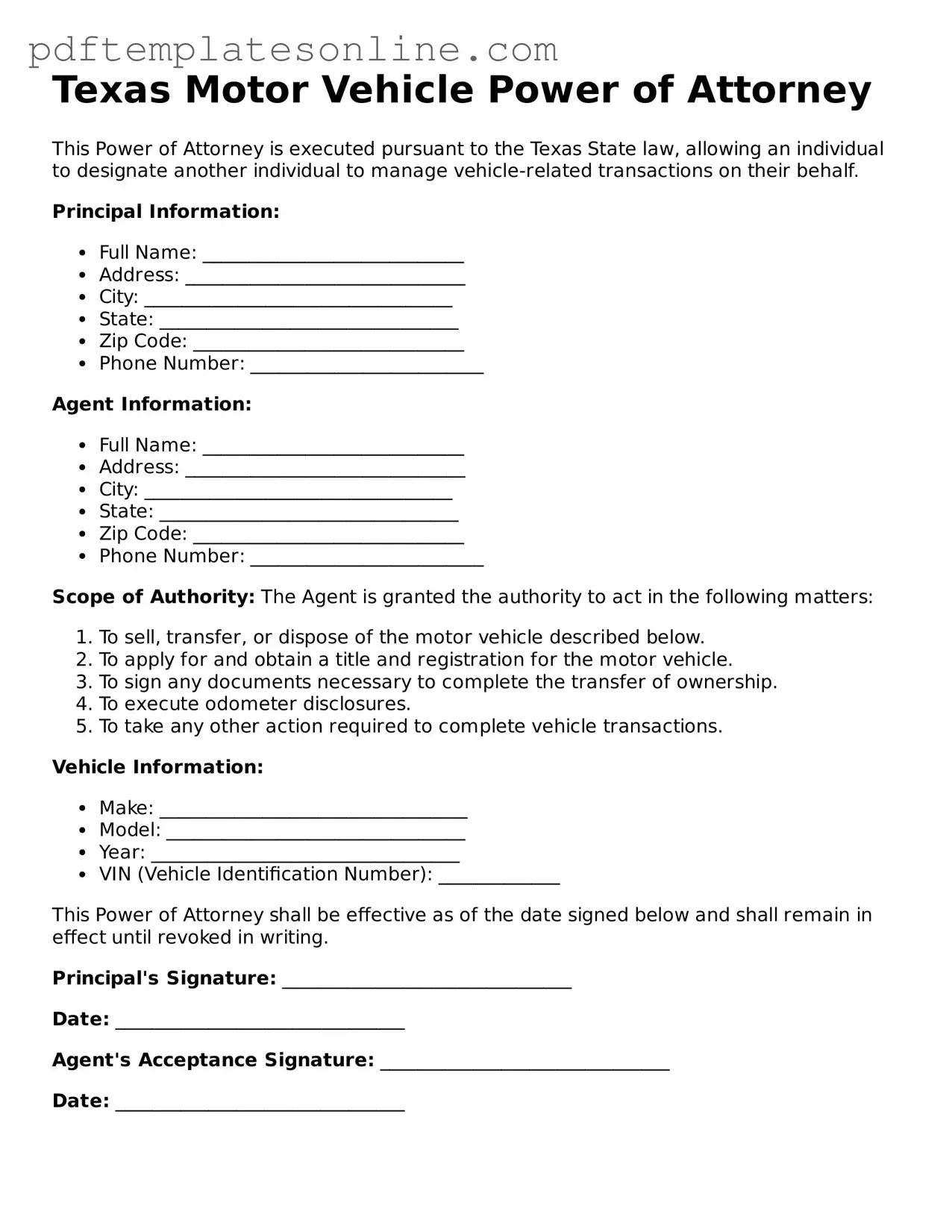Filling out the Texas Motor Vehicle Power of Attorney form can be a straightforward process, but many people make common mistakes that can lead to complications. One prevalent error occurs when individuals fail to provide complete information. The form requires specific details about both the principal and the agent, including names, addresses, and driver's license numbers. Omitting any of this information can render the document invalid.
Another frequent mistake involves signing the form incorrectly. The principal must sign the document in the designated area, and the signature must match the name printed on the form. If the signature is inconsistent or unclear, it may raise questions about the authenticity of the document. This can create unnecessary delays when trying to transfer ownership of a vehicle.
People often overlook the importance of having the form notarized. In Texas, while notarization is not always required for a Power of Attorney, it is highly recommended. A notary public can provide an additional layer of verification, helping to prevent disputes over the legitimacy of the document. Failing to have the form notarized may lead to issues when presenting it to the Department of Motor Vehicles.
Another mistake that can complicate matters is not specifying the scope of authority granted to the agent. The form allows the principal to limit the powers of the agent, such as restricting the authority to sell or transfer the vehicle. If the principal does not clearly outline these limits, the agent may inadvertently act outside the intended authority, leading to potential legal challenges.
Finally, people sometimes forget to keep a copy of the completed form. After filling out the Texas Motor Vehicle Power of Attorney, it is crucial to retain a copy for personal records. Having this documentation on hand can be invaluable if any questions arise in the future regarding the powers granted to the agent or the transactions conducted on behalf of the principal.
